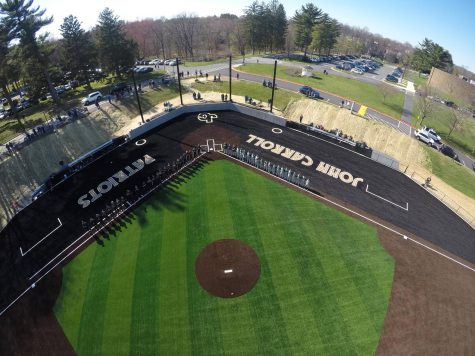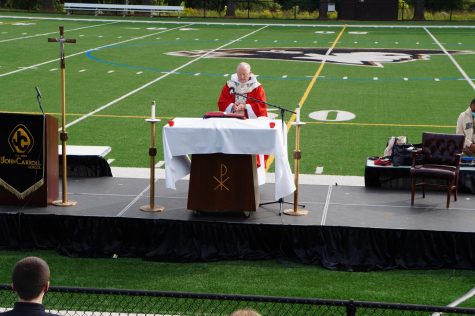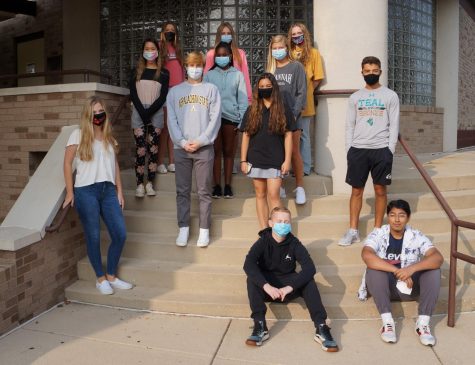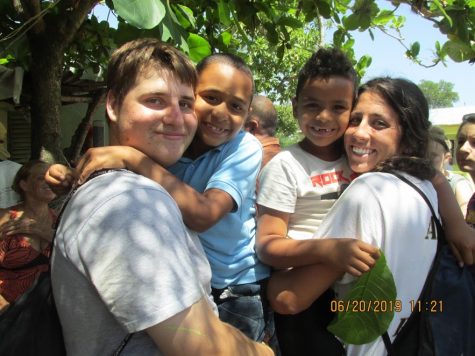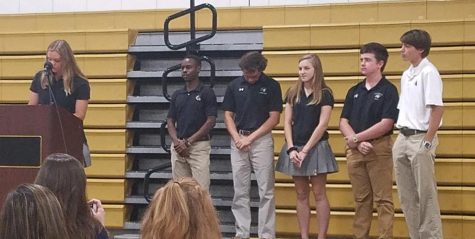STEM program visits Johns Hopkins robotics lab
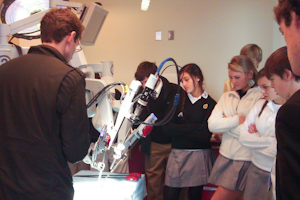
From left to right, freshman Claire Grunewald, freshman Alice Cumpston, freshman Carly Lyons, and freshman Sean Campbell watch a robot display at Johns Hopkins Robotics Center. They were also able to experiment with a robot used during surgery.
Freshman Claire Grunewald looks into the eye piece and sees everything in 3-D. She grabs the finger grippers and every inch of her movement is picked up and mimicked. This was her experience while using the DaVinici robot at the Johns Hopkins Robotics Lab on Nov. 30.
According to Grunewald, “the DaVinici robot is a surgical robot used for doing surgery inside the body without making large incisions. The robot arms and a camera would be inserted into the body and the surgeon would sit at the control center. They would put their face in an eye piece, seeing everything the camera sees in 3-D, and then pinch the finger grippers to move the robot hands. Every twist of the wrist was picked up by the robot.”
Grunewald went to the lab with the STEM program. The class left around 9 a.m. and arrived back to school at 1:30 p.m.
Freshman Sydney Branch was another student who attended the field trip. “My favorite part was testing the robot they use during surgery. It was cool to see robots completing a task that may be difficult for humans to do. I also liked the fact that the lab wasn’t shut down for the tour. Then, you were able to see people at work on multiple projects as if it was a regular day,” Branch said.
According to math and science teacher Courtney Hugo, a highlight of the trip was when the students were able to use the Da Vinci robot. “The robot is used for laparoscopic surgery, which is surgery on the eyes,” Hugo said.
PhD and undergraduate robotics students at Johns Hopkins showed the class robots they are researching in their hydro lab. One of the items was a $2 million robot.
“In the very beginning of the tour, we were taken into a room with a 14 foot tank filled with water. They told us how robots for underwater use are made and how they operate. The robot they showed us had six motors and cameras to get a of view from every angle,” she said.
“I had never realized how sensitive robots are until I got to use one,” Grunewald said.
The purpose of the trip was “just to expose the students to a different part of science,” according to Hugo.
“I liked seeing all of the labs and everything set up in them. When I was a grad student at University of Delaware, I worked for their bio resources engineering department and spent a lot of time in labs like that, so it was cool to be back in that environment,” Hugo said.
Haley Kyger is a Sports Editor for The Patriot and jcpatriot.org.




